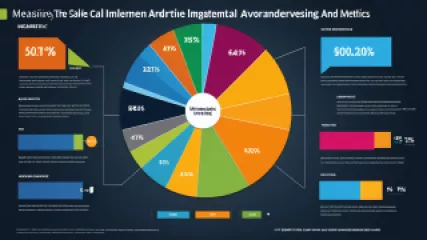Measuring the Impact of Advertising: A Research Summary
Measuring the Impact of Advertising: A Research Summary
Advertising has long been a crucial component of modern marketing strategies, playing a pivotal role in shaping consumer behavior and influencing brand recognition. As the advertising landscape continues to evolve, it has become increasingly important to understand the impact of these marketing efforts on various metrics, including sales, brand loyalty, and overall business performance. This research summary aims to provide an in-depth analysis of the current state of advertising impact measurement, highlighting key findings and insights that can help businesses optimize their advertising strategies.
The Importance of Measuring Advertising Impact
In an era of data-driven decision-making, the ability to accurately measure the impact of advertising is essential for businesses of all sizes. By understanding the effectiveness of their marketing campaigns, organizations can make more informed decisions, allocate resources more efficiently, and ultimately, achieve better returns on their advertising investments.
Effective advertising impact measurement can provide valuable insights into the following areas:
- Advertising Effectiveness: Measuring the degree to which advertising campaigns are achieving their intended goals, such as increasing brand awareness, driving sales, or generating leads.
- Return on Investment (ROI): Determining the financial return generated by advertising expenditures, allowing businesses to optimize their marketing budgets and improve the overall efficiency of their marketing efforts.
- Audience Engagement: Evaluating the level of engagement and interaction between consumers and advertising content, which can inform content strategy and media placement decisions.
- Competitive Advantage: Gaining a deeper understanding of how a brand's advertising performance compares to that of its competitors, enabling more informed strategic decision-making.
By leveraging the insights gained from advertising impact measurement, businesses can make more informed decisions, allocate resources more efficiently, and ultimately, achieve better returns on their advertising investments.
Approaches to Measuring Advertising Impact
Measuring the impact of advertising can be a complex and multifaceted process, with a range of methodologies and metrics available to businesses. In this research summary, we will explore some of the most common approaches to advertising impact measurement:
Sales-Based Metrics
One of the most direct ways to measure the impact of advertising is through sales-based metrics. These metrics focus on the immediate or short-term effects of advertising on sales, revenue, and other financial outcomes. Some common sales-based metrics include:
- Return on Ad Spend (ROAS): The ratio of revenue generated to the amount spent on advertising, providing a clear indication of the financial return on advertising investments.
- Incremental Sales: The additional sales generated as a direct result of an advertising campaign, compared to a control group or baseline period.
- Conversion Rates: The percentage of consumers who take a desired action, such as making a purchase or signing up for a service, after being exposed to an advertisement.
Sales-based metrics can be particularly useful for understanding the immediate impact of advertising on business performance, but they may not capture the longer-term effects, such as brand building or customer loyalty.
Brand-Based Metrics
In addition to sales-based metrics, businesses can also measure the impact of advertising on brand-related outcomes, such as brand awareness, brand sentiment, and brand loyalty. These metrics provide insights into the more intangible, yet crucial, aspects of advertising's influence. Some common brand-based metrics include:
- Brand Awareness: The extent to which consumers are familiar with a brand and can recall it in various contexts.
- Brand Sentiment: The overall perception and emotional response that consumers have towards a brand, which can be measured through surveys, social media analysis, or other methods.
- Brand Loyalty: The degree to which consumers remain loyal to a brand, as evidenced by repeat purchases, referrals, or other behaviors that indicate a strong affinity for the brand.
Brand-based metrics are particularly important for understanding the long-term impact of advertising on a brand's equity and consumer relationships, which can ultimately translate into sustained business growth.
Audience Engagement Metrics
Measuring the level of engagement between consumers and advertising content can provide valuable insights into the effectiveness of advertising campaigns. Audience engagement metrics focus on quantifying the level of interaction, attention, and response generated by advertising. Some common audience engagement metrics include:
- Click-Through Rate (CTR): The percentage of users who click on an advertisement after being exposed to it, indicating their level of interest and engagement.
- Dwell Time: The average amount of time that consumers spend engaging with an advertisement, which can be a proxy for the level of attention and interest generated.
- Shares and Engagements: The number of times that consumers share, comment on, or otherwise engage with advertising content, reflecting their level of interest and willingness to interact with the brand.
Audience engagement metrics can be particularly useful for understanding the effectiveness of digital advertising campaigns, as they provide insights into how consumers are interacting with and responding to the content.
Experimental and Observational Approaches
In addition to the metrics-based approaches discussed above, businesses can also employ experimental and observational methods to measure the impact of advertising. These approaches often involve the use of control groups, A/B testing, or other techniques that allow for the isolation of the effects of advertising from other confounding factors.
Some common experimental and observational approaches include:
- Randomized Controlled Trials (RCTs): Experiments in which consumers are randomly assigned to either an advertising exposure group or a control group, allowing researchers to measure the causal impact of advertising on various outcomes.
- Natural Experiments: Observational studies that leverage natural variations in advertising exposure, such as the presence or absence of advertising in certain markets or time periods, to measure the impact on consumer behavior.
- Econometric Modeling: The use of statistical techniques and data analysis to isolate the effects of advertising from other factors that may be influencing consumer behavior or business performance.
These experimental and observational approaches can provide a more robust and nuanced understanding of the impact of advertising, particularly when combined with the metrics-based approaches discussed earlier.
Challenges and Considerations in Measuring Advertising Impact
While measuring the impact of advertising is crucial for businesses, it is not without its challenges. Some of the key considerations and obstacles that organizations may face when attempting to measure advertising impact include:
Attribution and Causality
Accurately attributing the impact of advertising to specific marketing activities or campaigns can be challenging, as consumers are often exposed to a variety of marketing stimuli across multiple channels. Disentangling the relative contributions of different advertising efforts and isolating their causal effects can be a complex and resource-intensive process.
Data Availability and Quality
Effective advertising impact measurement often relies on the availability of robust, high-quality data. However, businesses may face challenges in accessing or integrating the necessary data sources, particularly when working with disparate systems or legacy technologies. The quality and reliability of the data can also be a concern, as inaccurate or incomplete data can skew the resulting insights.
Changing Consumer Behavior and Media Landscape
The advertising landscape is constantly evolving, with new media channels, technologies, and consumer behaviors emerging. As a result, the methods and metrics used to measure advertising impact may need to be regularly updated and refined to keep pace with these changes. Businesses must be agile and adaptable in their approach to advertising impact measurement.
Competing Priorities and Organizational Silos
Measuring the impact of advertising often requires cross-functional collaboration and the alignment of various organizational departments, such as marketing, finance, and analytics. However, competing priorities, organizational silos, and a lack of clear communication and data-sharing can impede the effectiveness of advertising impact measurement efforts.
Ethical and Privacy Considerations
As consumer privacy concerns continue to grow, businesses must also navigate the ethical and legal implications of data collection and advertising impact measurement. Compliance with regulations, such as the General Data Protection Regulation (GDPR) and the California Consumer Privacy Act (CCPA), is crucial in ensuring that advertising impact measurement practices respect consumer privacy and maintain trust.
Despite these challenges, the importance of measuring the impact of advertising remains paramount. By addressing these obstacles and adopting a comprehensive, data-driven approach to advertising impact measurement, businesses can make more informed decisions, optimize their marketing strategies, and ultimately, achieve better returns on their advertising investments.
Key Findings and Insights
Based on the research and analysis conducted, this summary presents the following key findings and insights on the measurement of advertising impact:
1. The Multifaceted Nature of Advertising Impact
Advertising impact is a complex and multifaceted phenomenon, encompassing a range of financial, brand-related, and audience engagement outcomes. Businesses must adopt a holistic approach to measurement, considering a variety of metrics and methods to capture the full impact of their advertising efforts.
2. The Importance of Experimental and Observational Approaches
While metrics-based approaches provide valuable insights, experimental and observational methods, such as randomized controlled trials and natural experiments, can offer a more robust and nuanced understanding of the causal effects of advertising. Integrating these approaches with traditional metrics can lead to more reliable and actionable insights.
3. The Need for Cross-Functional Collaboration and Data Integration
Effective advertising impact measurement often requires the collaboration of various organizational departments, including marketing, finance, and analytics. Businesses must break down silos, integrate data sources, and establish clear communication channels to ensure a holistic and data-driven approach to advertising impact measurement.
4. The Evolving Landscape and the Importance of Adaptability
As the advertising landscape continues to evolve, with new technologies, media channels, and consumer behaviors emerging, businesses must be agile and adaptable in their approach to advertising impact measurement. Regular review and refinement of measurement strategies and metrics are essential to keep pace with these changes and maintain the relevance and accuracy of the insights generated.
5. The Balance between Measurement and Privacy
Businesses must navigate the delicate balance between effective advertising impact measurement and the ethical and legal considerations surrounding consumer privacy. Compliance with relevant regulations and a commitment to transparency and consumer trust are critical in ensuring that advertising impact measurement practices are responsible and sustainable.
Conclusion
Measuring the impact of advertising is a complex and multifaceted endeavor, but one that is essential for businesses seeking to optimize their marketing strategies and achieve better returns on their advertising investments. By adopting a comprehensive, data-driven approach that integrates a variety of metrics, experimental methods, and cross-functional collaboration, organizations can gain a deeper understanding of the true impact of their advertising efforts.
As the advertising landscape continues to evolve, businesses must remain adaptable and agile in their approach to advertising impact measurement, regularly reviewing and refining their strategies to keep pace with emerging trends and consumer behaviors. By addressing the challenges and considerations outlined in this research summary, businesses can unlock the full potential of their advertising investments and drive sustainable growth and success.






